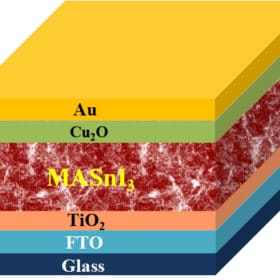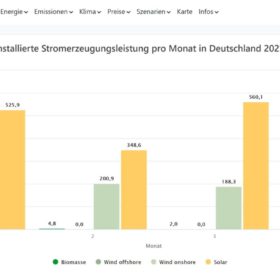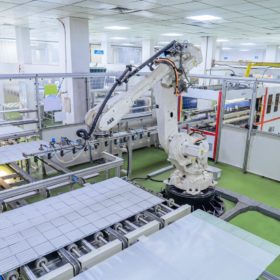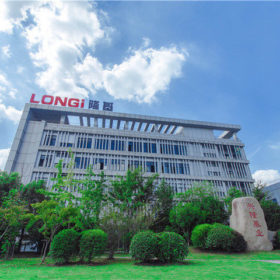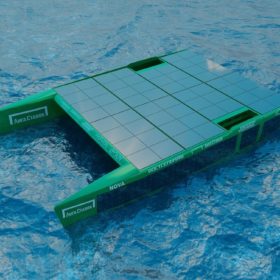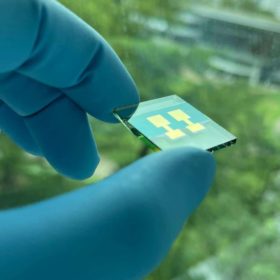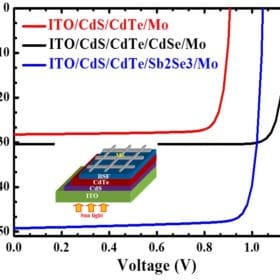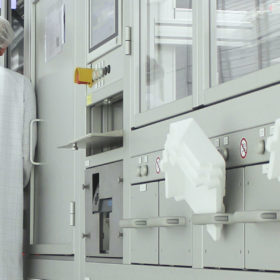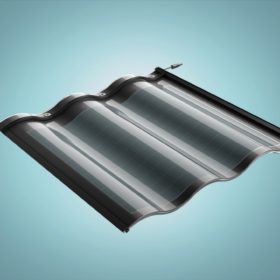Lead-free perovskite solar cell with potential efficiency of 27.4%
Scientists in India have simulated a perovskite cell based on methylammonium tin iodide which they claim may achieve a short circuit current density of 25.97 mA per square centimeter, an open-circuit voltage of 1.203 V, and a fill factor of 87.79%. The cell is composed of a fluorine-doped tin oxide (FTO) substrate, a titanium oxide layer, a methylammonium tin iodide perovskite film, a copper oxide hole transport layer (HTL), and a layer made of gold (Au).
Germany deployed 620 MW of solar in April
A large amount of April’s new PV capacity is represented by ground-mounted solar projects selected in tenders. By contrast, demand for PV systems ranging in size from 300 to 750 kW, has declined.
Covid adds to Indian solar manufacturer woes
A pandemic-related sales slump has dealt another blow to domestic panel makers already faced with rising input costs and an expected surge in imports due to the scheduled wind down of safeguarding duties on foreign products from late July.
Chinese PV Industry Brief: Polysilicon and wafer prices keep increasing
Longi has raised its wafer prices for June and the China Nonferrous Metals Association has reported this week that polysilicon reached a price of RMB200-210 per kg, and that the highest price exceeded RMB230 per kg.
Solar catamaran 100% powered by heterojunction modules
The 100% solar-powered boat will be tested in a 9,000 nautical mile expedition from Chile to Australia that is set to start in December. The vessel is equipped with an 11 kW PV system built with heterojunction modules provided by Russian manufacturer Hevel Solar.
Methylammonium-free perovskite solar cell with slot-die coating, 18% efficiency
Researchers have developed a slot-die coated solar cell with an ‘n-i-p’ layout and a fluorine-doped tin oxide substrate, a tin oxide layer, a perovskite film, and a hole-blocking layer. It has an efficiency of 18.03%, an open-circuit voltage of 1024 mV, and a short-circuit current density of 22.4 mA cm−2.
CdTe heterojunction solar cells based on antimony selenide back surface field layers
An international research group is seeking to increase the efficiency of heterojunction cadmium-telluride solar cells by applying back surface field (BSF) layers made of antimony selenide. It claims the addition of this compound may raise CdTe cell efficiency by around 9% and has the technical potential to reach efficiencies over 40%.
Valoe announces IBC solar cell order for specialist applications
Czech specialist module manufacturer Fill Factory has signed up to take €500,000 worth of Valoe’s inter-digitated back contact cells under a one-year supply contract.
Canadian BIPV module supplier unveils two solar tiles
Both products are based on 22%-efficient CIGS solar cells and are manufactured in Asia. One of the two devices has a flat design and power output of 80 W and a second product features a nominal power of 30 W and an undulating design.
Using excess heat from PV modules for lithium-extraction process
Canada-based Enertopia filed provisional patents for technology that it said could boost PV system output by 10% or more and reduce panel heat stress.
